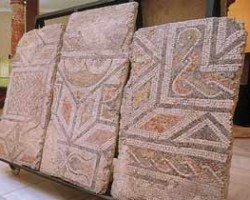Cabra maintains a balance between the rugged terrain of the Sierra and its garden plots. Cabra maintains a balance between the rugged terrain of the Sierra (referred to in the name of the patron of the town: the Virgen de la Sierra) and its garden plots. The inhabitants pray in the Parish Church of la Asunción, known as the “Baroque mosque”, envisage distant exploits in the castle-palace of the Counts of Cabra, commune with Juan Valera in the patio of the Casino [stately home], view the heart of Andalusia from the heights of Pichaco, listen to the music of the murmurs of the waters at Fuente del Río and cultivate knowledge in the old school of Aguilar y Eslava.
- This village is located in the south of the province, next to the C-336 and C-337 roads.
- Distance from Córdoba: 72 km.
- Altitude: 452 m.
- Surface area: 229 km2.
- Population: 20,935.
- Term used to designate inhabitants: Egabrenses.
- Region: Subbética Cordobesa
The exact age of Cabra is not known, although, under the name of Igabrum, the locality achieved the status of a Roman municipality during the Flavian period. The town was an episcopal see under the Visigoths and the capital of a cora [territorial division] during the period of Moorish occupation. The town was conquered by Ferdinand III via a pact in 1254, and in 1295 came under the control of the Order of Calatrava, which lasted up until 1331, when, according to M. Nieto, “it was laid waste and the inhabitants were taken to Granada as captives”. Following a period of instability involving several changes of ownership, in 1439, John II ceded the town to Diego Fernández de Córdoba, who would later become the Count of Cabra. The conquest of Granada brought stability to this border town, which entered into a period of urbanistic and demographic growth in the 16th century.














